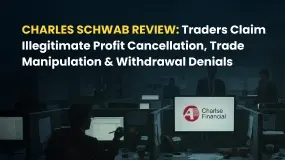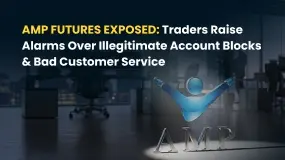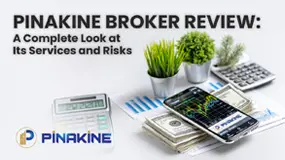简体中文
繁體中文
English
Pусский
日本語
ภาษาไทย
Tiếng Việt
Bahasa Indonesia
Español
हिन्दी
Filippiiniläinen
Français
Deutsch
Português
Türkçe
한국어
العربية
Cost-Push and Demand-Pull Inflation: Definitions and Examples
Abstract:Although price inflation can result in financial pain for consumers and investors, it can also be a sign of a healthy economy when inflation, or steadily higher prices, is under control.

Economists tell us that controlled inflation is a sign of economic growth. Central banks, such as the U.S. Federal Reserve, actually set monetary policy to maintain a consistent inflation rate of around two percent per year.
The gradually rising prices associated with inflation can be caused in two main ways: cost-push inflation and demand-pull inflation.
Both are associated with the principles of supply and demand.
What is Cost-Push Inflation?
Economists describe cost-push inflation as a condition when the supply of goods or services is limited in some way but demand remains the same, pushing up prices. The increased price of labor or raw materials, for example, leads to decreased supply of these goods. While demand remains constant, the prices of commodities increase causing a rise in the overall price level.
The overall price level increases due to higher costs of production which reflects in terms of increased prices of goods and commodities which primarily use these inputs. This is essentially inflation triggered by less supply.
Cost-Push Inflation is usually associated with an unexpected external event like a natural disaster or the depletion of natural resources, monopoly, government regulation, government taxation, and changes in exchange rates. Basically, any event that hinders a companys ability to produce enough of certain goods to keep up with consumer demand. This forces them to raise or inflate prices.
Examples of Cost-Push Inflation
The most common example of cost-push inflation occurs in the energy sector – oil and natural gas prices.
You and pretty much everyone else need a certain amount of gasoline to fuel your car or natural gas to heat your home. Refineries need a certain amount of crude oil to create gasoline and other fuels. Electric power suppliers need high levels of natural gas to create electricity.
When global policies, war, or natural disasters drastically reduce the oil supply, gasoline prices rise because demand remains relatively stable even as supply shrinks. Additionally, the recent shutdown of a natural gas pipeline due to cyber-theft trimmed the supply of natural gas, driving up prices despite steady weather-driven demand.
Hurricanes or floods are often the causes of cost-push inflation when they lead to the shutdown of certain refineries. Demand usually remains the same, but the refineries available to produce gasoline usually have to jack up prices because they dont have enough crude oil supply to turn into fuel.
What is Demand-Pull Inflation?
Demand-pull inflation is the tendency for prices to increase due to increasing aggregate demand, or the amount of goods and services the entire population buys. This type of inflation is usually associated with a strong economy.
As an economy strengthens, employment tends to rise. As more people go back to work, they make more money and they spend more money. However, if goods are limited at a time when people are willing to spend more money, competition among consumers drives prices up. Economists often refer to this type of inflation as “too many dollars chasing too few goods.”
Demand-pull inflation is not limited to the consumer sector of the economy. We get a similar outcome if the government puts more money into circulation, or if a low interest rate environment encourages too much borrowing.
Examples of Demand-Pull Inflation
In March of 2020, the global economy shut down due to the coronavirus pandemic. With the advent of a number of vaccines in late 2020, the global economy began to slowly open up. As the availability of vaccines increased, the pace of vaccinations rose sharply and the global economic recovery moved forward at a rapid speed.
The global economic recovery is driving up demand for goods and services that werent readily available for close to a year. Inventories have been depleted as consumers demand more food, household items, and fuel. This increased demand is “pulling” up prices.
Employment is rising also which means consumers have more disposable income. Gasoline demand and prices are rising as more employees drive to work. Airline tickets and hotel rooms are also rising as pent-up consumers increase travel.
The current low-interest-rate environment is keeping a lid on mortgage rates, which is encouraging consumers to buy more houses, but with the supply of homes limited, prices are skyrocketing. Some are buying new homes which have driven up the prices of lumber and copper to near-record levels.
Essentially, as the global economy opens up, individuals want to spend money, but factories havent been able to meet demand as quickly. Consumers are willing to pay higher prices, thereby, creating demand pull-inflation.

Disclaimer:
The views in this article only represent the author's personal views, and do not constitute investment advice on this platform. This platform does not guarantee the accuracy, completeness and timeliness of the information in the article, and will not be liable for any loss caused by the use of or reliance on the information in the article.
Read more

Charles Schwab Review: Traders Claim Illegitimate Profit Cancellation, Trade Manipulation & More
Have you been lured into the Charles Schwab app for trading on the back of outrageous profit claims by the broker? Did you fail to receive any of these? Does the broker deny withdrawals every time you request and cancel your forex trading account? Have you been victimized financially by its trade manipulation? Act before you are left with a NIL balance in your account. Many traders have questioned Charles Schwab customer service and many other operational executives for the aforementioned illegitimate trading activities. In this Charles Schwab review article, we have shared some of their comments. Read on!

AMP Futures Exposed: Traders Raise Alarms Over Illegitimate Account Blocks & Bad Customer Service
Has AMP Futures blocked your forex trading account? Does it fail to provide any explanation for this act? Do you face issues concerning deposits to your AMP Futures account? Is the customer service non-existent for any trading query you raise with it? You are not alone! Many traders have been facing these issues upon AMP Futures login. Some of them have commented on AMP Futures review platforms. In this article, we have shared some reviews that you can look at. Read on!

FXGlory Review: Vanishing Profits, Capital Scams & Withdrawal Charges Keep Annoying Traders
Does FXGlory remove all your forex trading account balances upon fund withdrawal requests? Or do you witness incorrect trading account balances after fund withdrawals? Does the Saint Lucia-based forex broker charge you for fund withdrawals? All these and many more scam-related complaints have been filed against the forex broker. In this FXGlory review article, we will discuss several complaints. Read on!

PINAKINE Broker Review: A Complete Look at Its Services and Risks
Finding a trustworthy broker from the huge and often confusing world of online trading options is one of the biggest challenges a trader faces. In this competitive market, PINAKINE Liquidity Limited has appeared, getting attention with promises of high leverage and zero-commission trading. However, a closer look shows important factors that every potential client must think about before investing. The most important thing to consider with PINAKINE is that it has no regulation. This fact completely changes how risky the broker is and has major effects on how safe your investments will be. This review gives a complete and fair examination based on information available to the public. We will break down its services, trading conditions, platform technology, and the possible risks involved, helping you make a fully informed decision.
WikiFX Broker
Latest News
Stonefort Securities Review: A Fair Look at Safety, Rules, and What Traders Say
Trump asks for meat packer probe over beef prices
Voices of the Golden Insight Award Jury | Tim Waterer, Chief Market Analyst of KCM Trade
Prop Firm Scams: When ‘Getting Funded’ Costs You Everything
PINAKINE Broker Review: A Complete Look at Its Services and Risks
One-Click Access to Broker Official Group Chats & Exclusive VPS Benefits
Consumer sentiment nears lowest level ever as worries build over shutdown
Uniglobe Markets MT4 Review: A Complete Look at Features, Costs, and Important Safety Issues
Is PINAKINE Broker Safe or a Scam? A 2025 Complete Review
Easy Money Doesn't Exist! High-Return Promise Turned into an RM44,000 Scam
Currency Calculator




